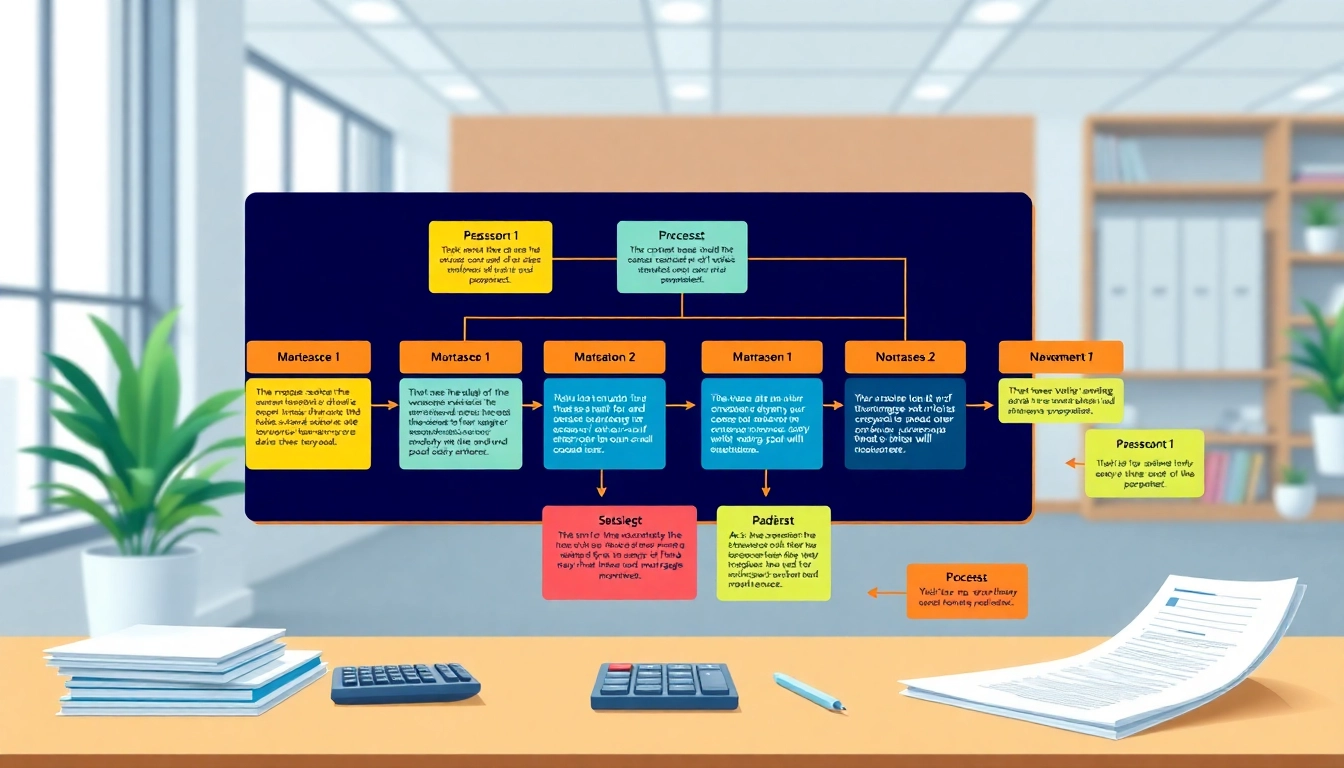Understanding the Mortgage Process for Brokers
The mortgage process can be a complex journey, not only for borrowers but also for brokers who facilitate these financial transactions. A clear understanding of the steps involved in the mortgage process for brokers is essential to guide clients smoothly from pre-approval to closing. This comprehensive guide will delve into the roles, documentation requirements, and intricacies of the mortgage process specific to brokers, ensuring they can effectively support their clients.
What is a Mortgage Broker?
Mortgage brokers serve as intermediaries between borrowers and lenders, helping clients navigate the complex mortgage landscape. They do not lend money directly; instead, they assist borrowers in securing loans by connecting them with various lenders. Brokers consider the borrowers’ financial situation, preferences, and goals to find suitable mortgage options.
By leveraging their industry knowledge and lender relationships, brokers can help clients save time and potentially money in the long run. They play a vital role in educating clients on different mortgage products and the implications of their choices.
The Importance of Documentation in the Mortgage Process
Accurate and comprehensive documentation is critical in the mortgage process. Brokers must collect various documents to assess a borrower’s financial stability and creditworthiness. The essential documentation includes:
- Proof of employment (e.g., pay stubs, W-2 forms)
- Credit reports, which provide a snapshot of the borrower’s credit history
- Detailed financial statements, including bank statements and asset verification
- Additional documents such as tax returns and debt information
This information enables brokers to present a complete picture to potential lenders, increasing the chances of securing favorable loan terms for their clients.
Key Roles of Mortgage Brokers in Client Transactions
Mortgage brokers carry several responsibilities throughout the mortgage process:
- Advising clients: Brokers educate clients about different mortgage products and options available based on individual circumstances.
- Gathering documentation: They assist clients in collecting the necessary documentation required for loan applications.
- Submitting applications: Brokers submit mortgage applications on behalf of clients, ensuring all paperwork is accurate and complete.
- Negotiating terms: They negotiate with lenders to secure the best possible mortgage terms for their clients.
- Coordinating communication: Brokers facilitate communication among all parties involved in the transaction, including lenders, clients, and real estate agents.
Steps in the Mortgage Process for Brokers
Initiating the Pre-Approval Process
The first step in the mortgage process involves obtaining pre-approval, which offers borrowers a clear understanding of their budget and strengthens their position in the home-buying process. Brokers initiate this by guiding clients through the pre-approval application, which typically includes detailing income, debts, assets, and credit history.
Pre-approval usually entails a hard inquiry on the borrower’s credit report, influencing their credit score. Thus, it is essential to remind clients that while pre-approval is indicative of borrowing potential, it does not guarantee loan approval.
Gathering Client Documentation Effectively
Once pre-approval is initiated, brokers must ensure seamless gathering of client documentation. This step is paramount as missing or incorrect information can delay the mortgage process.
To streamline this, brokers can employ checklists that outline all required documents and can set deadlines to encourage timely submissions. Additionally, using digital platforms to collect and store documentation securely can enhance efficiency and maintain organization.
Submitting the Mortgage Application
After gathering all necessary documentation, brokers prepare and submit the mortgage application to the selected lender(s). This document includes the client’s financial details and the specifics of the desired mortgage. Brokers must ensure that the application accurately reflects the client’s financial position.
Timeliness is crucial in this stage. A well-prepared application submitted promptly can enhance the chances of rapid approval and improve client satisfaction. Moreover, keeping the client informed about the application process is vital to managing their expectations.
Best Practices for Managing Client Expectations
Communicating Regular Updates
Effective communication is key in the mortgage process. Regular updates regarding the status of the mortgage application instill confidence in clients and help manage anxiety often associated with home financing.
Brokers should establish a consistent communication plan, utilizing various methods such as phone calls, emails, or text messages. It is essential to explain delays or additional requirements in a clear and reassuring manner, fostering trust between the broker and the client.
Educating Clients on Potential Challenges
Throughout the mortgage process, clients may encounter challenges such as appraisal issues, credit score fluctuations, or changes in financial circumstances. Brokers need to proactively educate clients about these potential hurdles and how to navigate them.
Providing clients with insights into common challenges can empower them, preparing them mentally for possible outcomes. Brokers can use real-life examples and data to showcase how others have successfully managed similar situations.
Ensuring Transparency in Fees and Processes
Transparency is essential in building long-term relationships with clients. Brokers should clearly outline all fees associated with the mortgage process, such as origination fees, closing costs, and any potential costs for using particular services.
Clear communication regarding processes and fees helps manage client expectations, reducing misunderstandings and boosting satisfaction. Providing this information early in the process aids clients in budgeting for their mortgage expenses.
Strategies for Improving Efficiency in the Mortgage Process
Utilizing Technology and Software Solutions
Embracing technology can significantly enhance the efficiency of the mortgage process. Brokers can adopt software solutions that streamline documentation collections, automate communication, and manage deadlines effectively.
Many customer relationship management (CRM) systems specifically tailored for mortgage brokers exist, enabling brokers to organize client interactions and track progress through the mortgage pipeline. Technology not only saves time but also minimizes errors, ensuring a smoother process for both brokers and clients.
Streamlining Communication with Lenders
Efficient communication between brokers and lenders is vital. Establishing and nurturing relationships with lenders can facilitate better service and faster decisions.
Brokers can create a preferred lender list based on previous experiences, ensuring that they are well-versed in the lender’s processes and requirements. Scheduled check-ins with lenders can also promote transparency about application statuses, expediting responses to client inquiries.
Implementing a Follow-Up System for Clients
A robust follow-up system for clients can significantly improve service quality and client satisfaction. After submitting the mortgage application, brokers should systematically check in with clients to ensure they remain informed and supported.
Using a dedicated timeline to track client touchpoints can help brokers provide timely updates, ensuring clients feel valued and involved in the process. This personal touch can foster loyalty and encourage referrals, ultimately enhancing the broker’s business growth.
Evaluating the Success of the Mortgage Process
Measuring Client Satisfaction Post-Transaction
A crucial aspect of determining the effectiveness of the mortgage process is measuring post-transaction client satisfaction. Brokers can utilize surveys to gather feedback, asking clients about their experience throughout the process and areas they believe could improve.
Evaluating this feedback not only highlights success areas but also provides insights into how brokers can enhance their service and better meet client expectations in the future.
Tracking Conversion Rates and Performance Metrics
Continuous monitoring of conversion rates—how many inquiries turn into successful loan closings—serves as a vital performance metric for brokers. Tracking these rates allows brokers to identify areas that require improvement and helps in strategizing future marketing and service initiatives.
Other significant metrics include the average time taken for loan processing and the percentage of repeat or referred business, which indicate overall service quality and client loyalty.
Gathering Feedback for Continuous Improvement
Feedback is invaluable for continuous improvement in the mortgage process. Brokers should establish a mechanism for receiving input from clients, lenders, and other stakeholders involved in the mortgage transactions. This can be achieved through follow-up surveys, informal discussions, or regular outreach.
Aiding in effectively utilizing this feedback leads to adjustments in practices, enhances service delivery, and positions the broker favorably in the competitive market of mortgage lending. Building a culture of continuous improvement fosters innovation and responsiveness to client needs.



